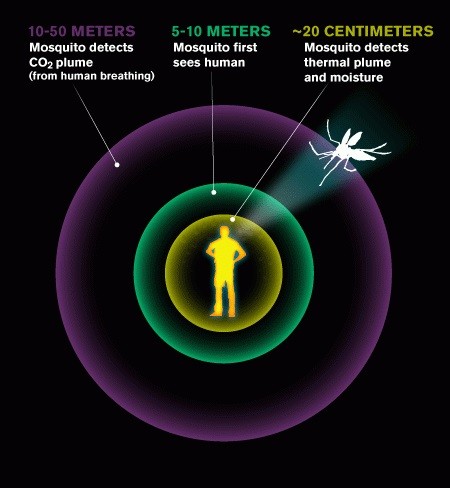Mosquitoes are known to carry infectious and even deadly diseases and their bites can be itchy and downright annoying. With this new study, scientists have discovered how these pests identify and target their next prey.
Among the dangerous and even deadly diseases that these wispy insects spread are malaria, dengue, yellow fever and more recently, West Nile virus which are carried throughout the globe by mosquitoes and infect their victims without their knowing. However, only little is known about how they select their next host where biologists are now learning how mosquitoes' senses work together.
Researchers from the University of Washington and the California Institute of Technology observed mosquitoes trapped inside a wind tunnel where they can be examined under controlled conditions. The chamber has no distinct features except for a black dot. When the chamber is filled with gas made up of mostly carbon dioxide that is similar to human breath, the mosquitoes came hovering towards the only visual stimulus inside the chamber which is the dot.
According to Jeff Riffell from the University of Washington, when the odor stimulus was released, all of a sudden, the mosquitoes went rushing towards this black dot. It appears as if the carbon dioxide gas triggered the visual stimulus where the insects was suddenly attracted to this dot.
Only the female mosquitoes bite humans and animals where they draw fresh blood to feed their young. When they have detected a potential source using their various senses, they target this unsuspecting donor. First, they use their acute sense of smell where they are able to detect if there is a warm blooded donor nearby.
If this theory is proven correct, it means that the mosquitoes will not select a target until it detects it via smell. After this step, secondary visual senses kick in making it easier for the mosquitoes to home in for its prey. Apart from this carbon dioxide trigger, when the researchers mix this gas with heat or water vapor, the insects apparently gets more attracted to its target.
According to Michael Dickinson from Caltech, this new study is suggesting that female mosquitoes already found an elegant solution to search for food where they only target a potential victim using smells first, and when they detect an odor, this becomes an indication of a potential prey. This is a unique strategy for these creatures so that they will not waste time looking at rocks or vegetation.
This new study can offer new strategies and solutions to prevent these pests from harming and spreading deadly diseases to areas with dense human populations. One solution is to confuse the mosquitoes' multisensory targeting method by exposing them to repellent smells.
This new study is published in the journal, Current Biology.



























